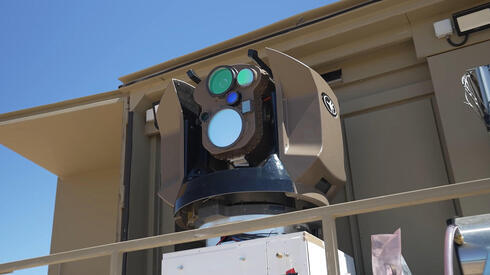Israel has always been at the forefront of defense technology, and its latest addition, the Iron Beam, is set to revolutionize the country’s defense strategy. Designed to use high-power lasers to down projectiles, Iron Beam is poised to become operational within the next year. This new laser defense system will complement Israel’s existing Iron Dome and is expected to herald a “new era of warfare.”
Photo: Iron Dome Defence System
About Iron Beam: The Next Step in Defense Innovation
The Iron Beam, also known as Magen or Light Shield, is a laser-based missile defense system developed by Israel. Unlike conventional missile defense systems, Iron Beam is a 100kW class High Energy Laser Weapon System (HELWS), capable of intercepting fast-moving projectiles such as rockets, drones, and mortars using high-powered laser beams. Unveiled in 2014, it has undergone rigorous testing and is now preparing to become the first operational system of its kind.
With a range of up to 7 km (4.3 miles), the system offers unparalleled defense capability, engaging threats at the speed of light. It is expected to complement existing systems like the Iron Dome, providing a multilayered defense against various airborne threats.
Advantages of the Iron Beam
- Unlimited Ammunition: One of the most notable features of the Iron Beam is its ability to operate with a continuous energy supply, meaning it never runs out of ammunition. This provides a sustained defense capability, ensuring that Israel’s defense systems remain operational, even during prolonged engagements.
- Cost-Effective: Traditional missile defense systems, such as the Iron Dome, rely on costly interceptor missiles, which can cost around $50,000 per missile. The Iron Beam, however, operates with minimal operational costs, significantly reducing the price of each interception and offering significant savings in the long run.
- Integration with Existing Systems: Iron Beam can be seamlessly integrated into Israel’s multilayer defense systems, working alongside the Iron Dome and other defense mechanisms. Its versatility allows it to engage smaller projectiles like drones and mortar shells, while larger threats, such as ballistic missiles, can still be handled by systems like the Arrow 2 and Arrow 3 interceptors.
Challenges and Limitations
Despite its impressive capabilities, the Iron Beam is not without its drawbacks:
- Adverse Weather Conditions: The system’s performance can be compromised under low visibility conditions such as heavy cloud cover or rain. Moisture in the atmosphere can absorb the laser’s energy, diminishing its effectiveness, and reducing its operational range in such weather.
- Line of Sight Requirements: Unlike traditional missile defense systems, Iron Beam requires a direct line of sight to its target. This means that proper placement of the system is crucial for its effectiveness. If the target is obstructed or out of range, the system cannot engage effectively.
- Slower Rate of Fire: While Iron Beam operates at the speed of light, it has a slower rate of fire compared to conventional interceptors. It takes about five seconds to transmit enough energy to destroy its target, which may not be quick enough in fast-moving combat situations.
A Game Changer for Israel’s Defense
As Israel continues its ongoing battle against Hamas in Palestine and Hezbollah in Lebanon, the Iron Beam will play a pivotal role in enhancing the country’s defense strategy. It will tackle smaller projectiles such as drones and rockets that are difficult for traditional systems like the Iron Dome to intercept effectively.
In the broader context of Israel’s military operations, the Iron Beam will significantly reduce the costs associated with missile interception while increasing the country’s defense capabilities. This cost-saving factor is especially important given the high costs of traditional interceptor missiles.
Conclusion: The Future of Warfare
With its advanced technology, cost efficiency, and the ability to engage a wide range of projectiles, the Iron Beam stands as a major step forward in Israel’s defense capabilities. However, it is not without its limitations, and Israel will continue to rely on multiple defense systems to protect its borders and citizens.
As tensions in the Middle East escalate, with countries like Iran backing Hezbollah and retaliatory strikes between Israel and Hamas, the Iron Beam is a reminder of how defense technologies are evolving. The United States’ ongoing military presence in the region, including adjustments to their assets, further highlights the complexity of this situation.
Israel’s commitment to innovation in defense is clear, and with the Iron Beam, the country is positioning itself at the forefront of next-generation military technology.

